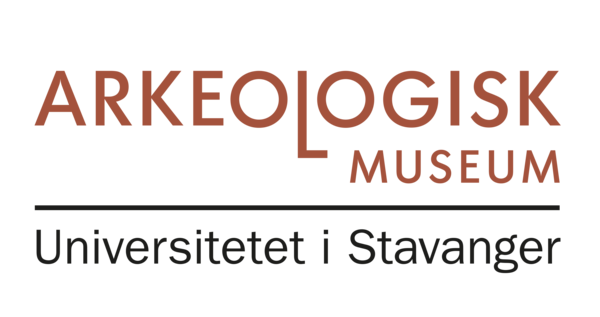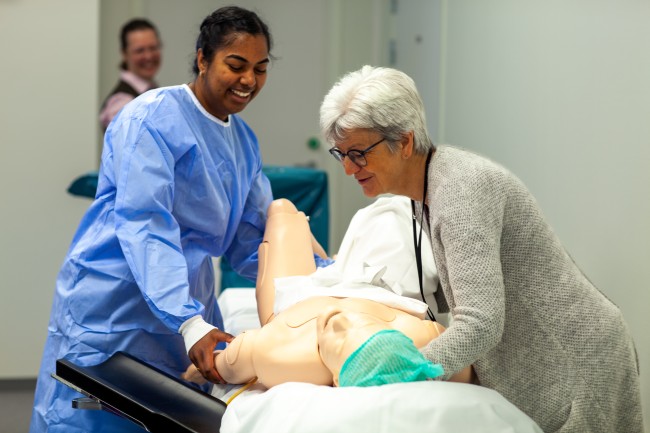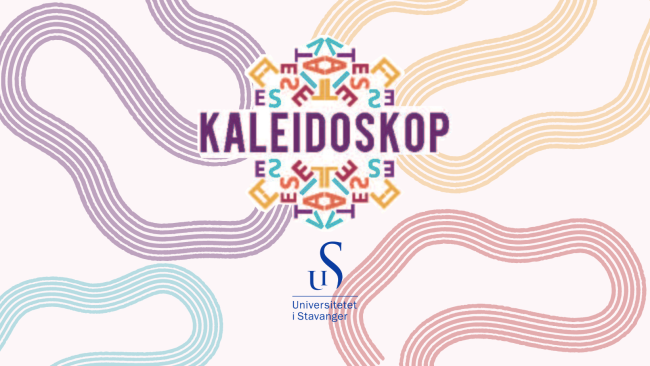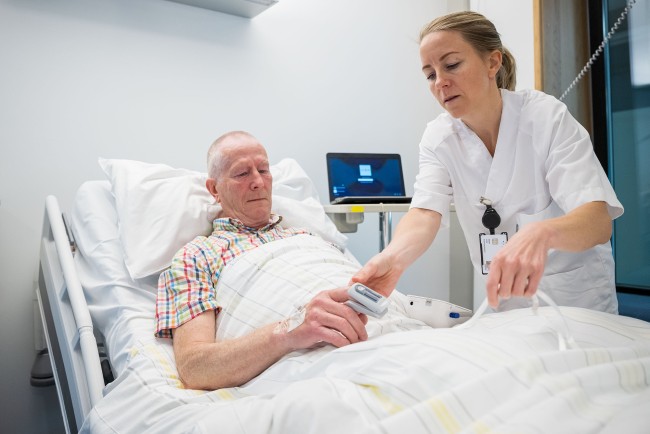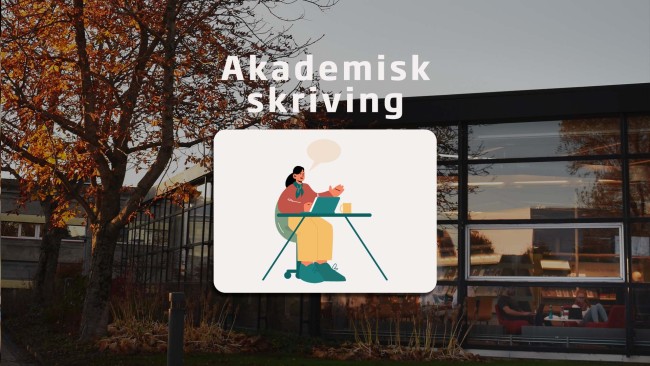Det betyr at innholdet du leter etter trolig finnes på en ny side. Vi hjelper deg videre herfra.
Hva leter du etter?
Søke etter innhold?
Søk og filtrer etter innhold fra søket vårt.
Are you looking for information in English? Please visit www.uis.no/en
Aktuelt fra Universitetet i Stavanger
Skal forske på koblingen mellom universiteter og vertsbyene
Senter for innovasjonsforskning ved Handelshøgskolen UiS har nylig blitt tildelt et EU-prosjekt med fem andre europeiske...
- Det viktigste jeg har lært er å holde hodet kaldt
Denne uken ble den årlige kriseøvelsen på journalistikkstudiet gjennomført. Studentene dekket et case om grov vold blant...
UiS vil ha senter for anvendt kunstig intelligens
Universitetet i Stavanger har de siste ti årene bygd opp flere sterke fagmiljø innenfor anvendt kunstig intelligens. Nå ...
Stenroos tildeles prestisjestipend til forskning på middelalderengelsk
Professor Merja Stenroos ved UiS er blitt tildelt det mest prestisjefylte stipendet fra EU, European Research Council (E...
Lover stipend til elkraft-studenter på UiS
Næringslivet sliter med å få tak i kvalifisert arbeidskraft til å kunne gjennomføre det grønne skiftet. Lyse, Smedvig og...
Ph.d.-kurs: Introduksjon til meta-analyse
Påmeldingsfrist er 29. april. Kurset er for doktorgradsstudenter. Arrangør er Kunnskapssenter for utdanning, ved Univers...
Inviterer til seminar for å skape god overgang til yrkeslivet for nytilsatte lærere
Hver vår i snart tjue år har UiS invitert nytilsatte lærere, veiledere, ledere og skole-eiere til et felles seminar på S...
Kaleidoskop - vel overstått festival fra SV-fakuletet
SV-fakultetet arrangerte Kaleidoskop for første gang denne uken. En flott festivaldag med godt innhold på Sølvberget.
Jærmuseet og Universitetet i Stavanger inngår samarbeidsavtale
UiS-studenter og museumsbesøkende får nye spennende muligheter når Jærmuseet og UiS utvider samarbeidet. Teknologi-praks...
Ola Kvaløy utnevnt til utvalg om sirkulær økonomi
Regjeringen setter ned en ekspertgruppe for å se på virkemidler for å redusere ressursbruken og bidra til en mer sirkulæ...
UiS var vertskap for nasjonal masterklasse i areal- og samfunnsplanlegging
10 studentar frå heile landet har vore samla på Universitetet i Stavanger i tre dagar for å lære om klimatilpassing gjen...
Rogaland i miniatyr – et prosjekt i utvikling
Totalt 18 tredjeårsstudenter på journalistikk og fjernsyns-og multimedieproduksjon deltok på prosjektet Rogaland i minia...
Equinor gir UiS 42,5 millioner til forskning på grønn omstilling
Universitetet i Stavanger kan dermed styrke sin satsing på karbonfangst, havvind, energisystemer og best mulig utnytting...
Nils Klim-prisen til energiorientert samfunnsgeograf
UiS-professor Siddharth Sareen forsker for å skape en mer rettferdig omstilling lokalt og globalt. Nå får han pris for f...
Populært emne i berekraft for alle studentar
UiS tilbyr no eit tverrfagleg emne i berekraft og grøn omstilling. Det var inspirerande og lærerikt, skal vi tro det før...
Meir leik i småskulen har gjeve gode resultat
Eit auka læringsutbytte og færre åtferdsutfordringar hjå elevane samt eit betre klassemiljø. Dette kan vere nokre av for...
Har du lyst på relevant deltidsjobb i biblioteket?
Er du student ved UiS? Har du lyst på en spennende og lærerik jobb ved siden av studiene hvor du samtidig utvikler din e...
Lykketreff - et møte mellom studenter og virksomheter
Masterstudentene på Institutt for medie- og samfunnsfag har mulighet til å ha et praksisopphold gjennom et valgemne. Den...
Mediestudentene driver en av Rogalands største nyhetsredaksjoner
I to uker skal journalistikk- og fjernsyns- og multimedieproduksjonsstudentene drifte redaksjonen Utsnitt, hvor de prod...
Fremtidens sykepleier(utdanning) – en felles utfordring
Over 200 personer deltok på et arrangement arrangert av Det helsevitenskapelige fakultet ved UiS, der tematikken var hvo...
«Siste finish» på Domkirkens barokkinventar
Det unike barokkinventaret i Stavanger domkirke skal snart smykke kirkerommet igjen etter å ha vært konservert av maleri...
Industriell teknologi og driftsleiing på topp hos UiS-studentane
Av alle studieprogram ved Universitetet i Stavanger (UiS), er det masterprogrammet i industriell teknologi og driftsleii...
Hvilken betydning kan barnehage, skole og SFO ha for sosial utjevning?
– Det har vært et spennende og lærerikt arbeid, sier professor Ingunn Størksen om å sitte i en regjeringsoppnevnt Eksper...
Studievalg: Finn ut hva du er nysgjerrig på å lære om
Bruk tid på å finne ut hva du er interessert i å lære om. Interesse og motivasjon går ofte hånd i hånd. Derfor kan det v...
Skandinavisk barnehageforskning: Forskere fra Danmark, Sverige og Norge kommenterer årets rapport
Den nye NB-ECEC-rapporten omhandler barnehageforskning i Skandinavia publisert i 2021. Kartleggingen viser at antall pub...
Lærere og forskere hjelper nyutdannede lærere med overgangen til praksis
Overgangen fra student til lærer eller barnehagelærer kan være krevende. I nye TV-sendinger får studenter og nyutdannede...
Norske forskere kan bidra til å endre Big Bang-teorien
I 2017 fikk amerikanske forskere Nobelpris for å ha observert gravitasjonsbølger fra jorda. Nå er norske forskere med på...
UiS anbefalt godkjent for psykologutdanning
NOKUTs sakkyndige komité anbefaler akkreditering av profesjonsstudium i psykologi ved Universitetet i Stavanger.
Innovasjonsprosjekt får såkornmidler fra HelseCampus
Fire prosjekter som på hvert sitt vis skal bidra til en bærekraftig helsetjeneste, er tildelt såkornmidler fra HelseCamp...
Sats på gode veilederordninger for nyutdannede barnehagelærere
Det er ikke i alle yrker man går rett fra studier og over til å ha lederansvar. Slik er det for mange nyutdanna barnehag...
– Dagens oppdragelse gjør barna mindre robuste
Det er én ting som fungerer for å gjøre barn mer robuste, sier forsker.
De skal bli sykepleiere. Hva tenker de om utdanningen og yrket?
Sykepleierstudentene Brage, Ida og Eirik forteller om en sosial og hektisk studiehverdag og ønsket om et meningsfylt yrk...
Kunstverkene i trygge rammer
Flere kunstverk fra UiS-kunstsamling har nå blitt hentet frem fra glemselen for å få ny innramming og nye rammer.
Forskningsprosjekt skal bidra til innsikt i hvordan vi kan forberede barnehager på framtidige pandemier
Forskningsprosjektet EXPECT har som mål å utvikle kunnskap om erfaringene og konsekvensene av koronapandemien, slik at n...
Kaleidoskop - en festival fra Det samfunnsvitenskapelige fakultet
Kaleidoskop setter fokus på viktige hendelser, livsendringer og kritiske perspektiver. Ved å presentere ulike synsvinkle...
Eksamen 12. februar og værutfordringer
Universitetet i Stavanger utsatte starttidspunktet for eksamen til klokken 0930 12. februar på grunn av været.
Veien videre for helsesektoren: innovasjon, samarbeid og brukerinvolvering
HelseCampus Stavanger-dagen 24. januar omhandlet hvordan vi møter fremtidens utfordringer i helsesektoren og hva som ska...
Ny midlertidig bussholdeplass på Campus Ullandhaug
På grunn av byggearbeid har det kommet en ny midlertidig bussholdeplass på campus, ikke langt unna den gamle.
Kan ha funnet Rogalands første markedsplass fra vikingtiden
Lovende georadarundersøkelser fra Utstein Gard på Klosterøy gjør at arkeologene tror de kan være på sporet av noe unikt....
Det skjer på UiS
Kunnskapsmøte: Har vi vilje og penger til et norsk havvindeventyr?
Tor. 18.04.2024
08:15-10:00
Norsk utdanningspolitikk i samspill med internasjonale trender og ideer
Tor. 18.04.2024
10:00-12:00
Vårkonsert med Stavanger Studentsangforening
Fre. 19.04.2024
20:00-21:30
Skal vi lese? høytlesning i biblioteket
Man. 22.04.2024
11:30-12:00
Greenhouse miljøhumaniorabokprater på nettet: "How the earth feels" av Dana Luciano
Man. 22.04.2024
16:00-17:00
Slik redigerer du oppgaven din (workshop)
Tir. 23.04.2024
09:15-12:00
Drop-In: Klargjør din PC til digital skoleeksamen
Tir. 23.04.2024
12:15-14:00
Informasjonsmøte om Erasmus+: Utveksling høsten 2024
Tir. 23.04.2024
12:15-13:00
Workshop: Senter for anvendt kunstig intelligens: Energi, helse og utdanning
Tir. 23.04.2024
13:00-16:00
Tidlig oppdagelse av forverret helsetilstand ved automatisk datafangst og bruk av sensorikk
Ons. 24.04.2024
11:00-15:30
Senter for innovasjonsforsknings fagseminar: The long-term impact of church activity on social capital – lessons from post-war Czechoslovakia
Tor. 25.04.2024
12:00-13:00
Greenhouse miljøhumaniorabokprater på nettet: "Silicon Valley and the Environmental Inequalities of High-Tech Urbanism" av Jason Heppler
Man. 29.04.2024
16:00-17:00
Opplæring i medisinsk teknisk utstyr
Tir. 30.04.2024
08:30-14:00
Avreiseseminar for deg som skal på utveksling høsten 2024
Tir. 30.04.2024
12:15-14:00
Meet & Pitch Idéverksted
Tir. 30.04.2024
13:00-15:00
Forskerfrokost: Utrolige kiselalger
Tor. 02.05.2024
09:00-10:00
Skriv! Les! 2024 – Nordisk forskerkonferanse om lesing, skriving, og literacy
Man. 06.05 09:00
ons. 08.05 16:45
Greenhouse miljøhumaniorabokprater på nettet: "Subjunctive Aesthetics" av Carolyn Fornoff
Man. 06.05.2024
16:00-17:00
Handelshøgskolens fagseminar: The Amazon Forest Fire – Export-Induced Deforestation
Ons. 08.05.2024
12:15-13:15
Ph.d.-kurs: Introduksjon til meta-analyse
Man. 13.05 09:15
ons. 15.05 15:45
Greenhouse miljøhumaniorabokprater på nettet: "The Graft Hybrid" av Matthew Holmes
Man. 13.05.2024
16:00-17:00
Drop-in for Erasmus+ Utveksling høsten 2024
Ons. 15.05.2024
10:00-14:00
Slik redigerer du oppgaven din (workshop)
Ons. 15.05.2024
10:15-13:00
Handelshøgskolens fagseminar: Explicit Gender Discrimination
Ons. 22.05.2024
12:15-13:15
Bokklubb – Flowers for Algernon av Daniel Keyes
Ons. 22.05.2024
18:00-20:00
